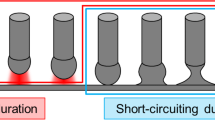Abstract
Wire-guided control technologies are widely used to increase the targeting accuracy of advanced military weapons through the use of unwinding dispensers to guarantee that unwinding occurs without any problems, such as tangling or cutting. In this study, the transient behaviors of cables unwinding from inner-winding cylindrical spool dispensers are investigated. The cable is withdrawn from the spool dispenser at a constant velocity through a fixed point located along the axis of the spool dispenser. And when the cable is flown out of the dispenser, because several dynamic forces such as inertial forces, Coriolis forces, centrifugal forces, tensile forces, and fluid-resistance forces act on the cables, the cables exhibit highly nonlinear and complex unwinding behaviors which are called as unwinding balloons. For predicting these complex unwinding motions, the governing equations of motion for cables unwinding from a cylindrical spool dispenser of the inner-winding type are derived using the extended Hamilton’s principles for an open system in which mass can be transported at each boundary. Modified finite difference methods are used to discretize the spatial variables of the derived nonlinear partial differential equations. The time responses of the unwinding cables are calculated using Newmark time integration methods. Finally, in order to present numerical examples, an inner-winding spool dispenser that can be unwound up to a length of 50 km is designed by using simple geometrical relationships. The behaviors during unwinding from the designed inner spool dispenser are presented and modifications of the spool dispenser for avoiding unwinding problems are proposed by using the suggested numerical methods.
Similar content being viewed by others
References
Wire Guided Missile: MILAN Project. http://www.eliteukforces.info/weapons/milan/
Wire Guided Torpedo: DM2A4. http://www.atlas-elektronik.com/
Padfield, D.G.: The motion and tension of an unwinding thread. I. Proc. R. Soc. Lond. 245, 382–407 (1956)
Fraser, W.B., Ghosh, T.K., Batra, S.K.: On unwinding Yarn from a cylindrical package. Proc., Math. Phys. Sci. 436(1898), 479–498 (1992)
McIver, D.B.: Hamilton’s principle for systems of changing mass. J. Eng. Math. 7(3), 249–261 (1973)
Kiusalaas, J.: Numerical Methods in Engineering with Matlab. Cambridge University Press, Cambridge (2005)
Newmark, N.M.: A Method of computation for structural dynamics. ASCE J. Eng. Mech. Div. 85, 67–94 (1959)
Bathe, K.J.: Finite Element Procedures. Prentice Hall International, Englewood Cliffs (1996)
The AUTOFLUG Product Range Measuring and Sensor Technology. http://www.autoflug.com
Gerhart, P.M., Gross, R.J., Hochstein, J.I.: Fundamentals of Fluid Mechanics, 2nd edn. Addison-Wesley, Reading (1992)
Author information
Authors and Affiliations
Corresponding author
Rights and permissions
About this article
Cite this article
Lee, JW., Kim, KW., Kim, HR. et al. Prediction of unwinding behaviors and problems of cables from inner-winding spool dispensers. Nonlinear Dyn 67, 1791–1809 (2012). https://doi.org/10.1007/s11071-011-0106-3
Received:
Accepted:
Published:
Issue Date:
DOI: https://doi.org/10.1007/s11071-011-0106-3




